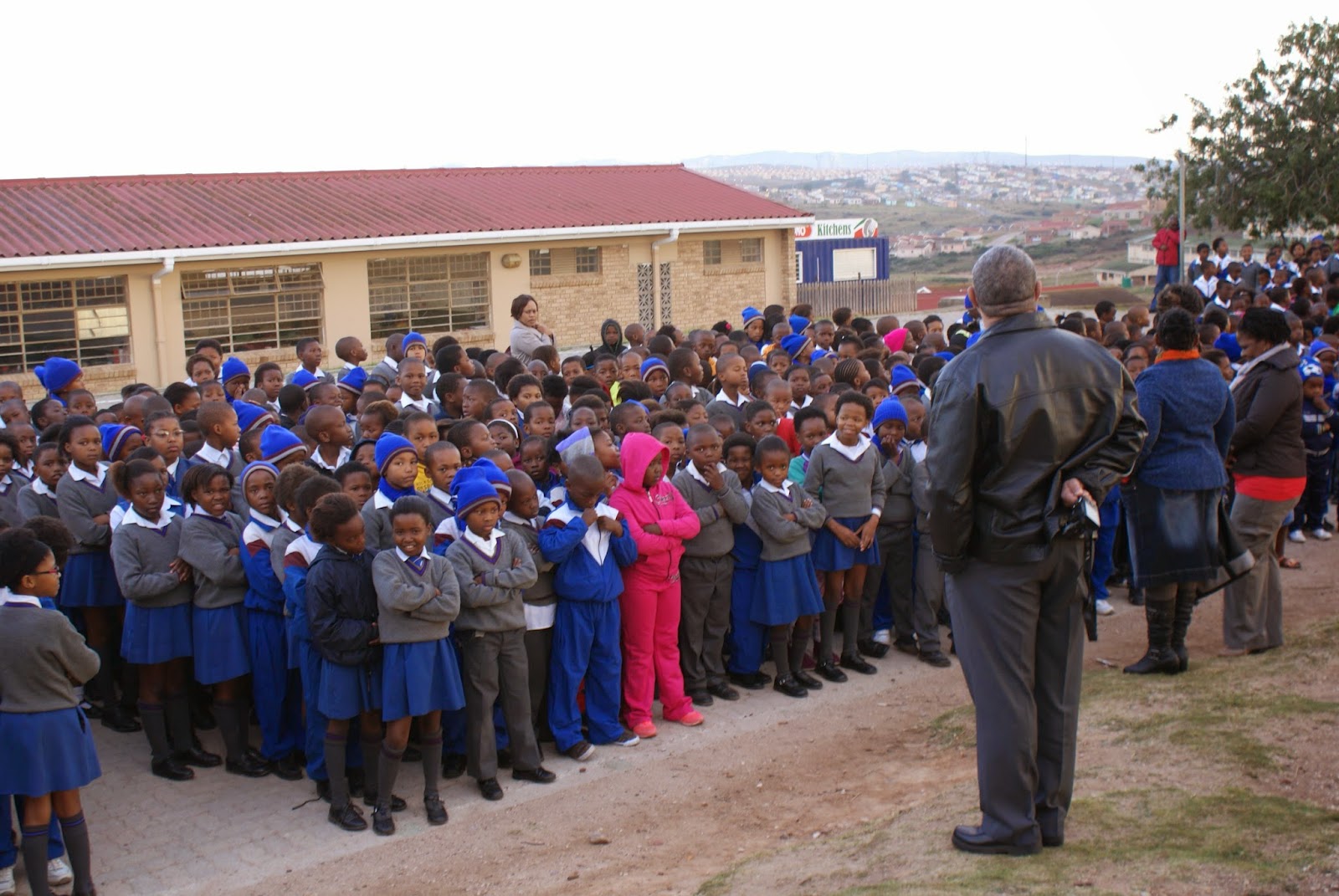The Reservation of Separate Amenities
Act (1953) enforced social segregation in all public amenities, such as
transport, cinemas, restaurants and sports facilities (Wooden, 2012). Still evident of the Act were communities of
Black South Africans struggling in a new economy and exposed to new requirement
either without or with limited resources for sustainability. There were pockets of poverty scattered
around Port Elizabeth as we drove to our destinations. Every morning we would look out of the window
of the van at houses made of containers and other sheet metal with no plumbing
or running water. Food and other
resources were also very scarce.
A
beautiful site every morning was watching the many learners walk to school
dressed in their uniforms. I reflected
upon American students who complain about riding the school bus everyday and
question their dedication to education.
Our South African learner at Emafini never complained about the travel
to and from school. They valued being at
school to receive and education as well as some food and adequate shelter. Educational apartheid was enforced in schools
(1953), technical colleges (1955), and universities (1959) (Wooden, 2012). Many of the schools that we visited were
segregated. This was very reminiscent of
the time period when US schools were undergoing desegregation. Many schools and school districts were
resistant to the changes and prolonged the process. Just like apartheid, South African schools
continue to be segregated, separate and not equal. Educational provisions for Africans have been
unequal and most government schools separated white and African pupils (Wooden,
2012).
However at Cape Recife learners are able to co-exist within the same school environment without the racial barriers that are still holding some back and helping others to be successful. All learners at Cape Recife are facing another challenge that has everything to do with education and learning. They all have some type of disability that prevents them from accessing regular education. The school provides academic, physical, and social/emotional supports to help conquer some these challenges for their learners. It was evident in our visit that it is about need...for eduction and that's what schools are made for!
(Schools shown below are: The Gray, Cape Recife, and Emafini)











